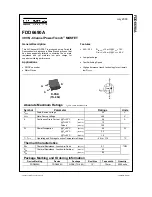
Level One Memory System
ARM DDI 0363G
Copyright © 2006-2011 ARM Limited. All rights reserved.
8-6
ID073015
Non-Confidential
8.2.5
Error correction
When a correctable error is detected in data that is read from a RAM, the processor has various
ways of generating the correct data, that follow two schemes:
Correct inline
The error code bits are used to correct the data read from the RAM, and this data
is used. This is the simplest way of correcting the data.
Correct-and-retry
The error code bits are used to correct the data, and this data is then written back
to the RAM. The processor then repeats the read access by re-executing the
instruction that caused the read, and reads the corrected data from the RAM if no
more errors have occurred. This takes more clock cycles (at least nine) in the
event of an error, but has the side-effect of correcting the data in the RAM so that
the errors in the data cannot become worse.
Note
Because RAM errors generally occur infrequently, the extra cycles required to
perform correct-and-retry do not have a significant impact on average
performance.
The correction method that the processor uses depends on the individual error. The processor
uses correct inline error correction when it detects a correctable error on a TCM read made by
the AXI slave interface. The processor uses correct-and-retry correction when it detects a
correctable ECC error on a TCM read made by the instruction side or data side.
















































